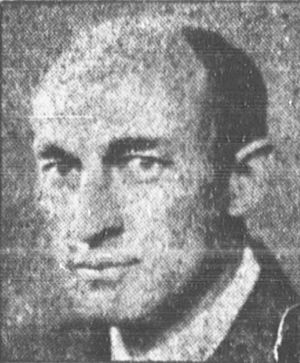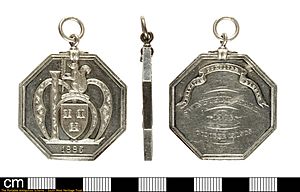Swinburne Hale facts for kids
Swinburne Hale (born 1884, died 1937) was an American lawyer and poet. He was also interested in socialist ideas. People remember him best as a top lawyer who worked for civil rights in the 1920s. Hale went to Harvard College with Roger Nash Baldwin. He was also a law partner with Walter Nelles and Isaac Shorr. Swinburne Hale helped start and worked for the American Civil Liberties Union (ACLU). He also played a part in politics in the early 1920s. He was a main member of the Committee of 48 and spoke for the new Farmer-Labor Party.
Contents
Who Was Swinburne Hale?
Swinburne Hale was born on April 5, 1884, in Ithaca, New York. He was one of four children. His father, William Gardner Hale, was a Latin scholar. He led the Latin Department at the University of Chicago. Swinburne's mother, Harriett Knowles Swinburne, went to college. She was active in the women's suffrage movement, which worked for women's right to vote.
In 1905, Hale earned his first degree from Harvard University. He lived in Grays Hall during his first year. In 1908, he got his law degree from Harvard Law School.
Hale's Career as a Lawyer
After finishing law school, Hale moved to Greenwich Village in New York City. He met many writers and artists there while working as a lawyer. By 1912, he was already speaking out for women's suffrage. This was the movement to give women the right to vote.
Hale was part of a law firm called Hale, Nelles, and Shorr. This firm was known for defending people who were called "radicals." His partners were Isaac Shorr and Walter Nelles. They were well-known to people like Carlo Tresca, an important Italian anarchist.
Hale's Work During World War I
In 1917, Hale helped create a magazine called New France. This magazine focused on how America could help rebuild France after World War I. In 1918, Hale became a captain in the Intelligence Division of the United States Army. This division gathered important information for the military.
Fighting for Rights and Political Involvement
After World War I, Hale became more involved in Socialist activities. His partner, Walter Nelles, said Hale was "not a Socialist but interested in socialism." This means he supported socialist ideas but might not have been a full member of the party.
In 1919, Hale joined the Committee of 48. This was a group that worked for social changes. Later, this group supported Robert M. La Follette, Sr. for president in 1924. Hale also worked as a lawyer for people who were sent to Ellis Island for deportation. These people were often accused of being communists during the Palmer Raids. These raids were part of the First Red Scare, a time when many people were afraid of communism.
Hale was very busy in 1920:
- He spoke before a committee in the U.S. House of Representatives. He testified with Alfred Bettman, who was a special assistant attorney general.
- In July, he was active at a meeting of the Committee of 48.
- In the fall, he worked as a publicist for the new Farmer-Labor Party (FLP). He explained how the FLP was different from the Socialist Party of America (SPA). He said the SPA was only for "pure socialists." But the FLP wanted to include more people, like farmers, small business owners, and professionals, not just wage-workers.
- He wrote to Tom Mooney, a labor activist. He said, "We are in a hot bed of repression here, with only a very few lawyers who are willing and able to handle the situation, and who are hopelessly overworked." This shows how hard it was to find lawyers to help people during that time.
Swinburne Hale's Family and Later Life
Walter Nelles, Hale's law partner, was also a close friend. Hale was married two times. In 1910, he married Beatrice Forbes-Robertson Hale. They had three daughters. They divorced in 1920. In 1921, he married Marie Tudor Garland Green.
In 1925, Hale bought a coal yard in Westport, Connecticut. He wanted to turn it into a studio with apartments. His idea was to create a place for artists and writers to live and work. Also in 1925, Hale had a nervous breakdown. Swinburne Hale died at age 53 on July 3, 1937. He passed away in a special care facility in Westport, Connecticut.
Hale's Legacy and Writings
Swinburne Hale's papers are kept at the New York Public Library in New York City. These papers fill 8 boxes and 1 large folder. They cover the years 1908 to 1924. Most of them are personal letters. They do not show much about his work as a lawyer or his socialist interests.
Published Works
Here are some of the things Swinburne Hale wrote:
Poetry:
- The Demon's Notebook: Verse and Perverse. New York: N.L. Brown, 1923
Law and Politics:
- Do We Need More Sedition Laws? : Testimony of Alfred Bettman and Swinburne Hale before the Committee on Rules of the House of Representatives. New York: American Civil Liberties Union, n.d. [1920].



